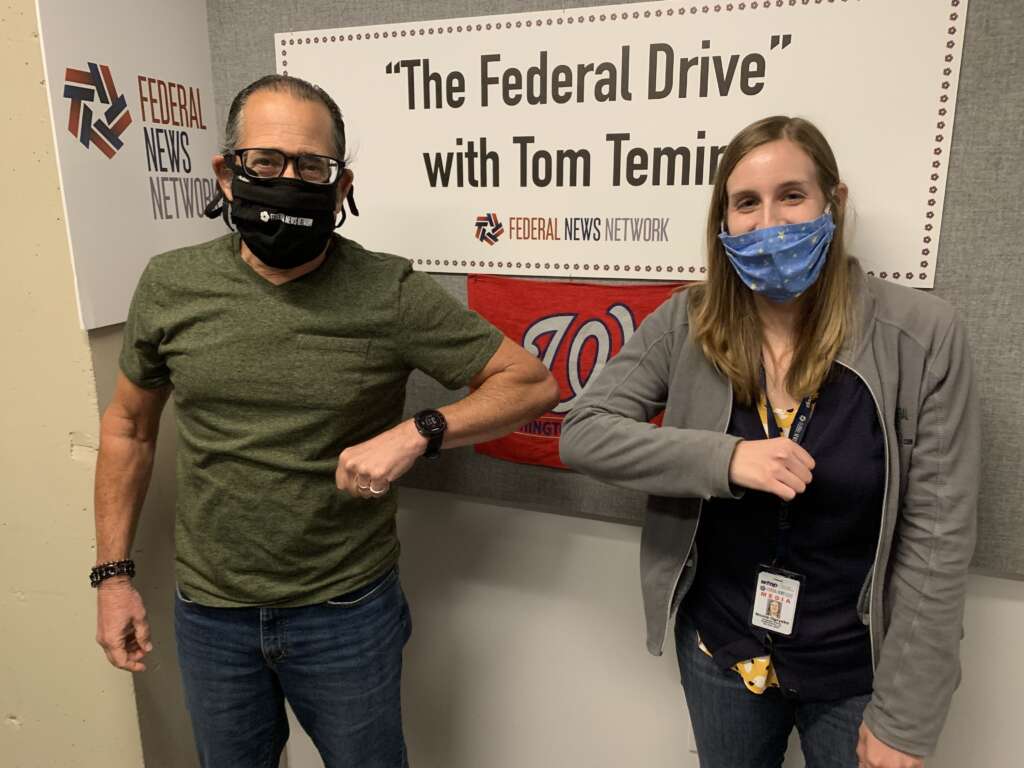
Let the people work — in the office, for the kids
Can we all agree, mass telework and virtual meetings and the rest of it, are getting old?
Like the morning of a blizzard, the early moments of the pandemic were, let’s admit it, sort of thrilling. Everyone was in it together, everyone was disrupted to some degree. It was also scary. People thought a cloud of virus could ride into the house on a box of corn flakes.
It still is a little scary. One federal IT official I know well described actually contracting and recovering from COVID. He didn’t have the most horrible symptoms, but it took the tar out of him, and not just for a few days. I had lunch a couple of Saturdays ago in a bar-and-grill in rural Virginia. Friendly place, good food, nice service. But no one — least of all the young waitress — wore a mask. The burger was good, the conversation with fellow bikers that day convivial. But I thought, “Hmmmmm…”
Have you had the test? Yuck. It actually hurts a bit. I had it the other night because I’ll be traveling out of state for a few days on what passes for a vacation this summer. Fifteen seconds in each of your two nostrils with that swab? Your eyes water. They don’t just go booger depth either, but way up to practically your eyeballs.
The whole shebang — the telework, the uncertainty, all in a political season that is already tiresome — it’s all getting frayed around the edges. Two seasons have nearly come and gone. The Senate adjourned until Labor Day. The Fourth of July seems like an eternity ago. We were deep into this thing by Memorial Day. The novelty has worn off.
I think it’s time for people to get back to their offices. Not all at once, and not everyone, every day. But agencies ought to devise some sort of rotating schedule so people can see and talk to one another in person.
As someone who has only teleworked on three days since the pandemic started, it can be downright thrilling to see a colleague come in. My Monday column counterpart, Nicole Ogrysko, was in the other day for a couple of hours. I celebrated by springing for subs.

Clearly people with young ‘uns at home have it the toughest, at least judging from my latest unscientific poll of interviews I’ve conducted in recent days.
These people need to get out. A program manager at a large Commerce agency wrote me to say that, with three young children at home, “it is madness at the best of times.” The youngest is two years old. Her husband is also a fed, and the childcare options she described as a “struggle.” They’re afraid to bring in sitters or au pairs, and reluctant to send the kids to day camps or day care. I’m tearing my hair out just thinking about it.
She adds, “In terms of 100% telework for myself and my team, I think there is a strain on morale overall because there are so many nuances missed in the virtual environment.”
As the telework drags into the school year and autumn, she said “my husband and I are converting our rooms in our house to accommodate dedicated work areas so that we can have two monitors and docking stations — and proper office chairs.” She adds that she’d like to return to work at the agency, but only when the can send the kids to school.
The hive of contractors and lawyers surrounding government are no less stressed. A partner at a big law firm with a big federal practice also has two youngsters at home. The result is many late evenings catching up on work after the kiddos are in bed. He’s got a second grader in the Falls Church, Virginia district — and it’s going to be virtual. Luckily the preschooler will go to whatever they call school for preschoolers in tiny person. But he and his wife did hire an au pair.
Then there’s the think tanker I interviewed by our Ring Central software. Behind him in a basement room, the home-built climbing wall for his tots looked like a sort of metaphor. Everyone is climbing walls as this drags on. Day care and his wife’s teaching job with its current difficulties are both sources of stress, he said.
“Hate it,” is the reaction of a military academy professor, referring to telework. His wife is a military officer who teleworks two days a week. They’ve got a 9-, 7-, and 4-year old at home. He ends up working Saturdays — every one since March — because somebody has to look after the kids when he’s home alone. To boot, “I dislike all the virtual meetings, presentations, all of it.” It’s not even close to in-person, this Iraq veteran writes.
I’m writing this at home. For a break, I went outside to check the mailbox in the late afternoon. I noticed the cicadas have switched to their autumn pitch. It’s more shrill and urgent than the spring tone. This happens in mid to late August. So the snuffed out promise of April is giving way to the melancholy of fall and a pandemic still with us. A rolling telework/office schedule could help the mood.
Nearly Useless Factoid
The medical term for brain freeze is sphenopalatine ganglioneuralgia. Brain freeze is caused by the sphenopalatine ganglioneuralgia nerves (SPG), which is a group of nerves near the trigeminal nerve in the brain. These nerves are located behind the nose and the nerves that also cause headache pain.
Source: Healthline
Copyright © 2024 Federal News Network. All rights reserved. This website is not intended for users located within the European Economic Area.
Tom Temin is host of the Federal Drive and has been providing insight on federal technology and management issues for more than 30 years.
Follow @tteminWFED





